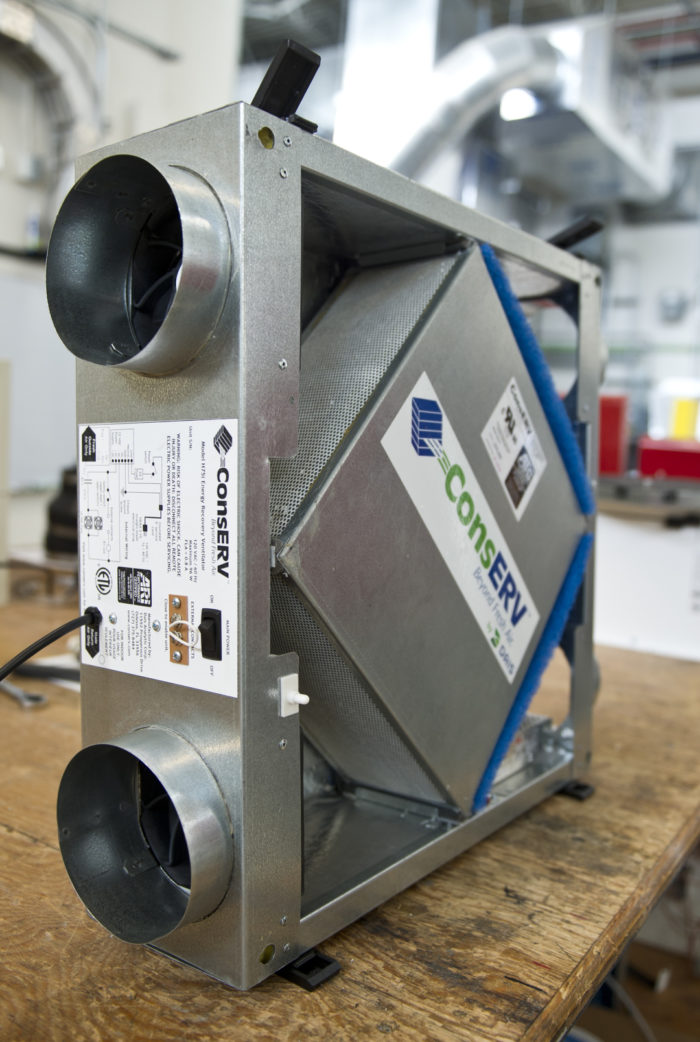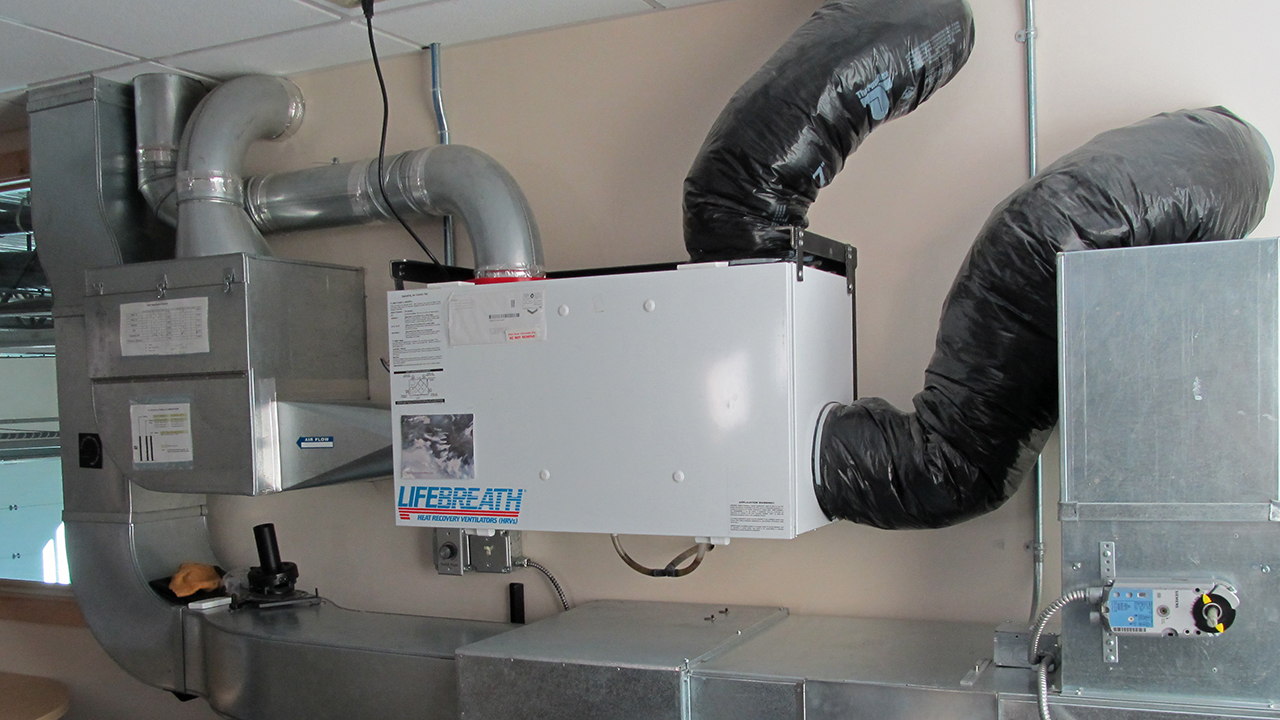Unveiling the Trick Advantages and Uses of Heat Recovery Ventilation in Lasting Style
Heat Recovery Ventilation (HRV) systems play a necessary function in sustainable layout. They help with a continuous exchange of stale indoor air with fresh outside air, significantly improving interior air quality. HRVs contribute to energy effectiveness by redeeming heat from exhausted air, which can decrease energy prices. Comprehending the complex advantages and applications of HRVs reveals their value in modern-day architecture. What other advantages do these systems supply in the quest of sustainability?
Comprehending Heat Recovery Ventilation Equipments
Heat recovery ventilation (HRV) systems are designed to improve interior air quality while reducing power loss. These systems make use of a mechanical ventilation technique to exchange stale indoor air with fresh outdoor air, ensuring a continuous supply of clean air. By recording warmth from the exhaust air, HRVs precondition inbound air, minimizing the demand on home heating and cooling down systems. This process not only boosts thermal convenience but likewise adds to energy effectiveness in domestic and commercial structures. Furthermore, HRV systems aid control moisture levels and decrease indoor contaminants, advertising a healthier living environment. Their tactical implementation is vital for accomplishing lasting layout objectives, as they offer a balance between power preservation and owner health.
How HRV Systems Work
While many may be familiar with ventilation systems, comprehending exactly how warm healing air flow (HRV) systems operate is crucial for appreciating their benefits. HRV systems operate by trading stagnant interior air with fresh outside air while transferring warmth in between both streams. This procedure happens in a warm exchanger, where warm from the outbound air heats the incoming air throughout cooler months, decreasing power loss. Alternatively, in warmer months, the system can cool down incoming air using the cooler outbound air. HRVs are equipped with followers to help with airflow and filters to remove particulates, making sure a constant, balanced air flow procedure. This innovative design not only improves energy efficiency yet likewise contributes to preserving a comfortable interior atmosphere.
Enhancing Indoor Air Quality
Indoor air top quality can considerably impact health and wellness and well-being, making reliable ventilation crucial in modern-day homes. Heat Recovery Ventilation (HRV) systems play a necessary role in preserving interior air top quality by continually exchanging stale interior air with fresh outdoor air. This process not only reduces airborne contaminants however likewise lessens moisture degrees, which can bring about mold development and breathing concerns. HRV systems filter inbound air, removing allergens and particulates, consequently providing a much healthier living environment. Furthermore, these systems help remove odors and unstable natural compounds (VOCs) frequently found in family items. By making sure a consistent flow of tidy air, HRV systems add to a general better interior ambience, promoting convenience and well-being for occupants.
Energy Efficiency and Expense Financial Savings
Energy performance stands out as a considerable benefit of Heat Recovery Ventilation (HRV) systems. By capturing and reusing the warmth from exhausted indoor air, HRVs minimize the energy needed for heating inbound fresh air, bring about lowered energy consumption. This effectiveness equates right into reduced energy costs, using considerable price financial savings for homeowners and companies alike. Furthermore, HRV systems commonly get approved for power effectiveness motivations and discounts, better boosting their economic allure. With time, the first investment in HRV technology can bring about a beneficial return on financial investment through reduced power expenditures. The integration of HRV systems not only promotes sustainable design however additionally supplies a functional remedy for accomplishing lasting energy cost savings and economic benefits.
Ecological Benefits of HRV

A wide variety of ecological advantages develops from the application of Heat Recovery Ventilation (HRV) systems. By effectively transferring heat from exhaust air to inbound fresh air, HRVs considerably decrease the energy needed for home heating and cooling spaces. This power effectiveness translates to decrease greenhouse gas discharges, adding to a decrease in the overall carbon footprint of buildings. Furthermore, HRV systems boost indoor air quality by continually distributing fresh air, thus decreasing the focus of indoor pollutants and irritants. The reduction in power consumption aids in preserving natural sources, making HRVs a necessary component of lasting design. On the whole, the ecological benefits of HRVs play an important duty in promoting a much healthier planet and cultivating environment-friendly building practices.
Versatile Applications in Modern Style
Heat recovery ventilation (HRV) systems are significantly being integrated right into both domestic and business architectural jobs. In household setups, HRVs enhance indoor air top quality while optimizing energy effectiveness. Meanwhile, in industrial areas, these systems maximize air flow strategies, demonstrating their adaptability in contemporary architectural applications.
Residential Projects Assimilation
While modern-day architecture progressively highlights sustainability, the combination of warmth recuperation ventilation systems in domestic jobs has become a sensible remedy for enhancing indoor air top quality and power efficiency. These systems efficiently transfer heat from exhaust air to incoming fresh air, minimizing energy loss and lowering heating or cooling down needs. In new builds and retrofits alike, heat recuperation ventilation can be seamlessly incorporated, offering property owners with a healthier living atmosphere while decreasing energy expenses. In addition, with raising recognition of ecological effects, more architects and contractors are recognizing the long-term advantages of these systems. Therefore, warm healing ventilation has actually become a crucial component of sustainable household design, showcasing convenience and dedication to green methods.
Commercial Areas Optimization
As contemporary commercial rooms develop to meet the demands of sustainability and efficiency, the implementation of warm healing ventilation systems emerges as a vital method for optimizing interior atmospheres. These systems facilitate the exchange of stagnant indoor air with fresh outside air while reclaiming warmth energy, substantially reducing power usage. This not just improves Look At This convenience for residents yet additionally helps in lowering functional costs. Flexible applications can be observed in offices, retail areas, and universities, where air top quality and temperature control are extremely important. In addition, integrating warm recuperation ventilation lines up with green building accreditations, additionally advertising environmental duty. Eventually, taking on such systems in business design not just adds to sustainability objectives but also promotes much healthier, extra effective spaces for individuals.
Incorporating HRV Into Sustainable Design Practices
Integrating warm healing air flow (HRV) systems right into lasting layout techniques provides significant benefits in power performance and indoor air top quality. By using HRV, designers can create cost-efficient remedies that not just lower power usage however likewise improve the general comfort of interior settings. This placement with sustainability goals positions HRV as a necessary part in contemporary architectural techniques.
Power Performance Improvement
By integrating heat recovery air flow (HRV) systems right into lasting style practices, engineers and building contractors can substantially improve energy performance in modern-day building and constructions. HRV systems work by capturing warmth from outbound stagnant air and transferring it to incoming fresh air, minimizing the energy needed for heating or cooling down indoor rooms. This process not just minimizes reliance on traditional cooling and heating systems yet also decreases general power consumption. Furthermore, HRV systems can assist maintain a consistent interior temperature, reducing peak energy needs. By incorporating these systems, buildings can achieve significant decreases in utility prices and carbon footprints, straightening with sustainability goals. Ultimately, HRV technology represents a sensible service for boosting power performance in the developed atmosphere, promoting even more responsible resource usage.
Indoor Air Top Quality Enhancement
Just how can heat healing ventilation (HRV) systems add to superior interior air quality in modern-day buildings? HRV systems efficiently exchange stagnant indoor air with fresh outdoor air while recouping heat, decreasing temperature level changes. This procedure lowers the focus of indoor pollutants, such as unpredictable organic substances (VOCs), allergens, and moisture, which can weaken air quality and effect occupant health and wellness. By preserving perfect moisture levels and ensuring a continual supply of tidy air, HRVs help develop a healthier indoor environment. Furthermore, these systems can be incorporated into sustainable design practices, promoting energy efficiency along with boosted air top quality. HRV Heat Recovery Ventilation. HRV innovation plays a crucial role in advancing total owner convenience and wellness in contemporary architectural layouts.
Cost-efficient Style Solutions

Often Asked Concerns
What Maintenance Is Required for Heat Recovery Ventilation Systems?

Upkeep for heat healing air flow systems commonly includes normal filter replacements, cleaning of heat exchangers, examination of fans and air ducts, and guaranteeing appropriate water drainage. These jobs assist maintain performance and extend the system's life expectancy with time.
Can HRV Equipments Be Mounted in Existing Buildings?
Heat recovery ventilation systems can undoubtedly be installed in existing structures. HRV Heat Recovery Ventilation. Retrofitting calls for cautious planning and assessment of the building's design, making sure compatibility with present systems while taking full advantage of energy effectiveness and indoor air top quality
Just How Do HRV Equipment Impact Noise Degrees Inside?
HRV systems can influence indoor noise levels by presenting audio from exterior sources through air flow. High-grade installations frequently integrate sound-dampening features, reducing noise influence while giving reliable air exchange and keeping convenience inside your home.
Are There Any Type Of Drawbacks to Using HRV Systems?
The downsides of using HRV systems consist of possible high first expenses, maintenance challenges, and the possibility of lowered interior webpage air high quality if filters are not on a regular basis transformed, which might result in issues with moisture degrees.
Exactly how Do I Choose the Right HRV System for My Demands?
Picking the appropriate warmth healing ventilation system entails examining particular needs, such as developing dimension, environment, and power performance goals. Additionally, assessing system functions, setup requirements, and upkeep considerations is vital for peak efficiency and fulfillment.